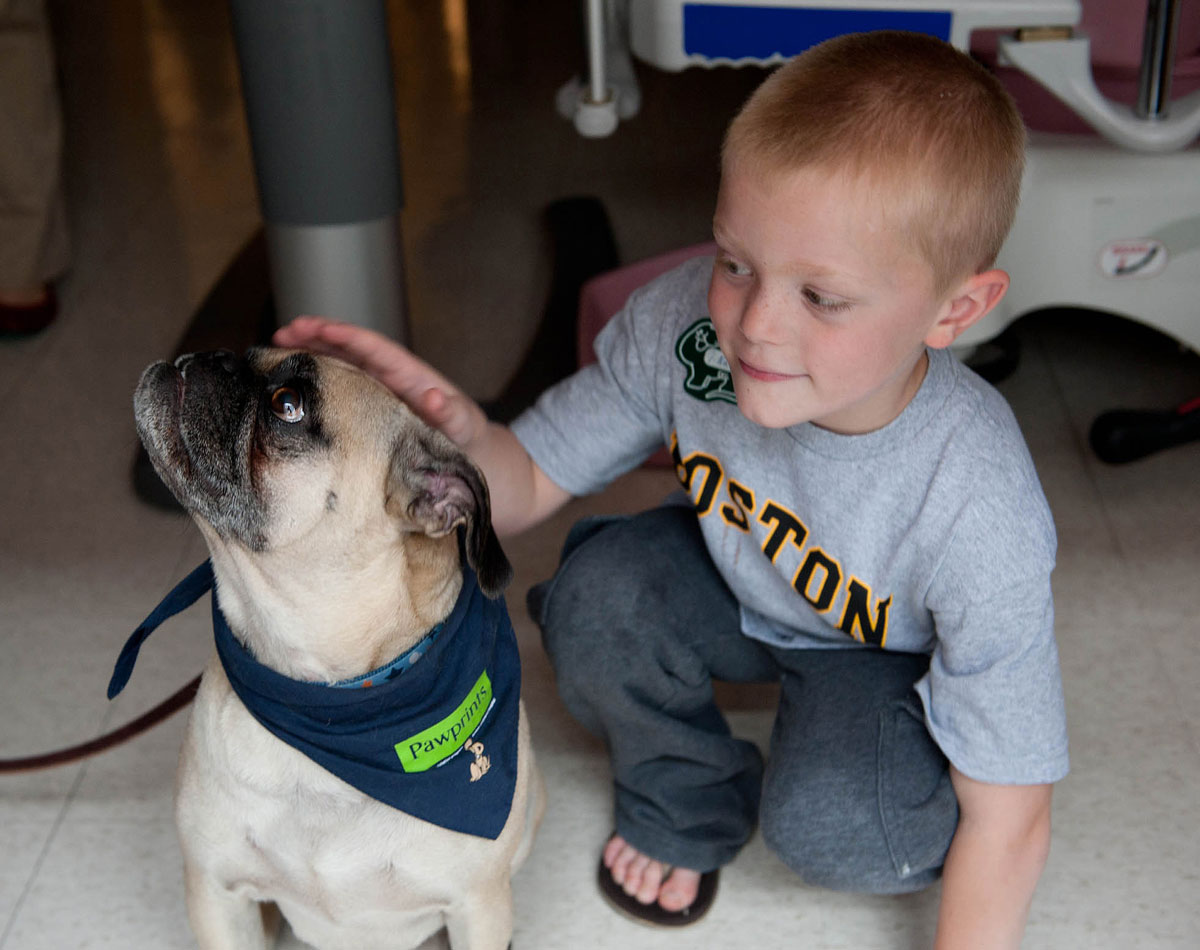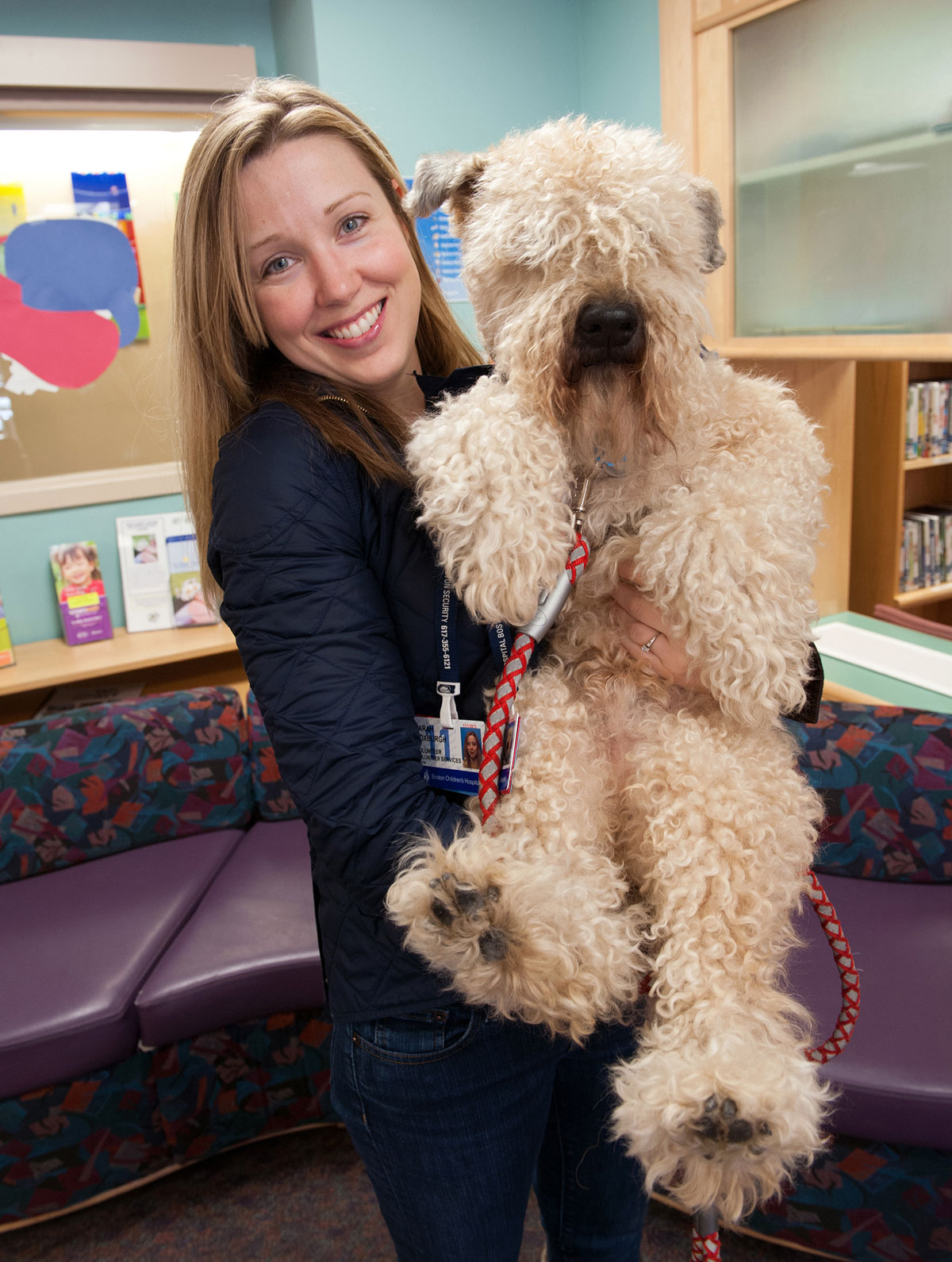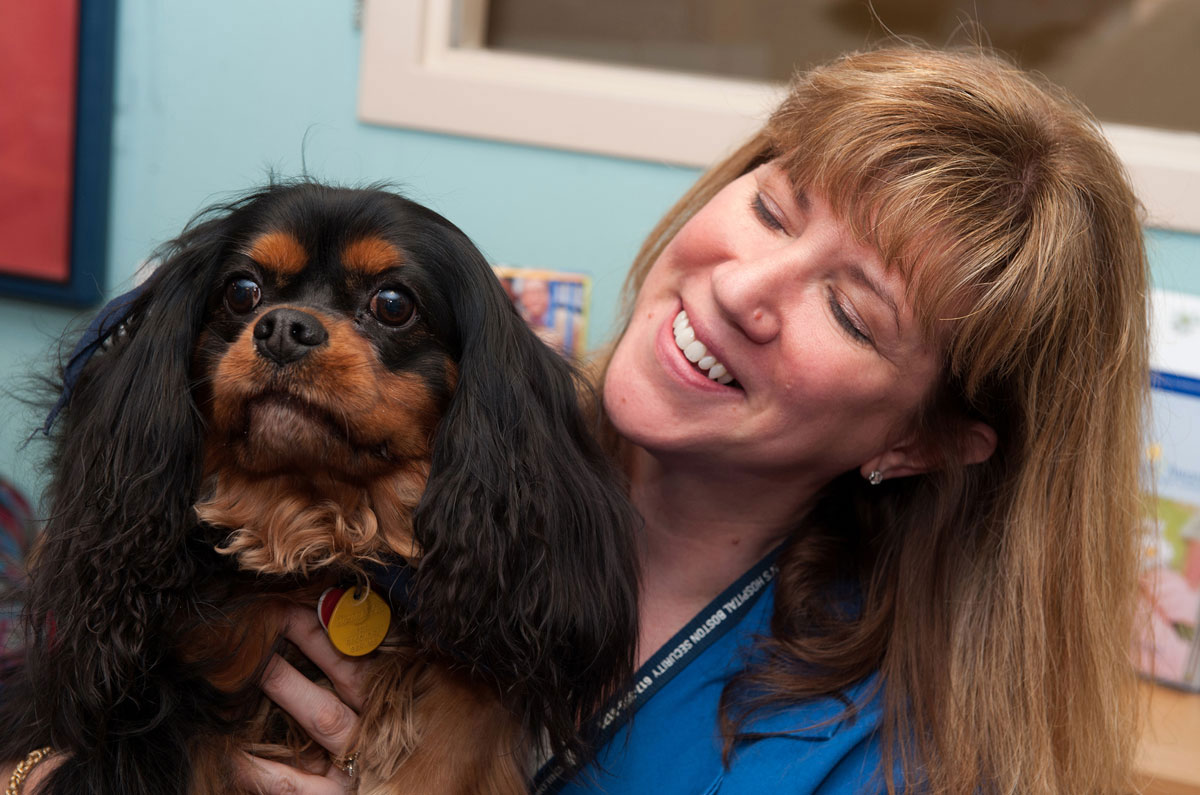Q&A: Pawprints Founder Aimee Lyons

Pawprints dog Phil with Boston Children’s Patient. All photos provided.
They say that a dog is man’s best friend, but Aimee Lyons could argue that it’s really the perfect kid’s companion. Lyons, a critical care nurse at Boston Children’s Hospital, founded Pawprints, a program that brings dogs in for therapeutic visits for patients at the hospital.
Dogs and owners go through an evaluation period that lasts about three months in order to be considered for the program. Once approved, the dogs go in for visits, and the patients get to choose how they’d like to spend their time with the dog, whether it’s playing, going for a walk, or just cuddling. Lyons has seen the program bring positive results to the children countless times, and now she is working to collect the actual evidence, perhaps to expand the program. We caught up with her to hear about how she started the program, her research, and what it’s like to work with these furry friends.
How did you first come up with Pawprints?
In 2001, I was watching something on TV that showed dogs going into adult hospitals. That’s when I thought, why can’t we do this at Boston Children’s Hospital? So I gathered an interdisciplinary committee to plan and implement the program, and in January of 2003 we had our first Pawprints visit, which was a golden labrador named Stella.
Was anyone skeptical about it?
The Infectious Disease department didn’t think we could do it. But we did our research, we looked at other programs around the state and country, and eventually we got their approval. Most hospital-based dog therapy programs are for adults, so we are one of a few specializing in just pediatrics. That also may have been where some of the skepticism came from.

How has the program grown?
We have 13 teams that visit 10 inpatient pediatric units, two outpatient pediatric waiting rooms, and the Center for Families. We had 1,100 patient visits in 2013, and about 8,245 visits from when we first started in 2003. We have so much volunteer interest that there is currently a waiting list to join the program. I have also been working on conducting research on the effectiveness of these visits. Hopefully that will give people evidence of the program’s importance so we can expand even more.
How does the research work?
I’m looking at how the patients and the dogs react to the program. I’ve been examining pre- and post-anxiety surveys of the patients and analyzing about 90 videos of visits to see if the interactions have been positive for both the dogs and the children. So far, they have been.

Pawprints dog Herman with handler Sarah
Why are dogs so helpful in the hospital environment?
Dogs don’t care if you have needles or monitors attached to you; they bring you unconditional love whether you are healthy or sick. I also think that the dogs create a diversion from the normal hospital routine and give the kids something to look forward to. They also really help the patients feel more at home in the hospital.
Can you tell me about a particularly memorable visit?
I can give you a lot. One that sticks out in my head, though, was when one of our dogs visited this boy around 8-years-old who was very depressed after having a heart transplant. When the dog walked in the boy sat right up, started hugging her, talking to her, and jumped out of bed to take her for a walk. He was so thin from the surgery that his pants fell off. Everyone in the room was crying because that was the first time since his surgery that he had spoken and gotten out of bed.
What are the dogs like?
The dogs are very well behaved and are always happy to see you. We’ve never had an incident like a growl, bark, or bite.

What is your hope for the future of this program?
We are trying to expand further into our outpatient programs and get more dogs on board. Now the dogs only visit a couple times a months, usually one visit per unit a week. I personally would love if we could do daily visits.
Do you ever think you’ll add other animals to the program?
Right now? No. First I’m just trying to expand the program within the hospital. It was funny though, someone did once suggest we try bringing in miniature horses.

Dog Indy with Handler Laura


